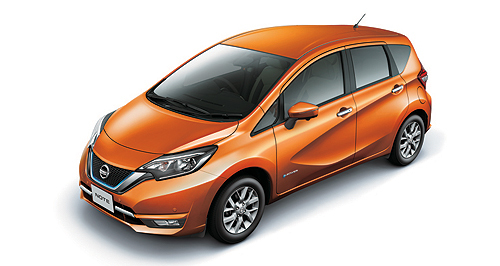Make / Model Search
News - NissanEVs need government support: NissanNumero uno: The new-gen Leaf will still be the number one best-selling EV globally, according to its maker. Intervention, incentives necessary to push EV adoption quickly according to Nissan29 Nov 2017 By TUNG NGUYEN NISSAN Australia’s new managing director Stephen Lester believes that government support is needed in order for faster mass-market electric vehicle (EV) adoption, but emissions-free motoring in Australia will ultimately be driven by customer demand. Despite Volkswagen Australia embracing the position that government interference is not necessary for electrified powertrain acceptance, Mr Lester told GoAuto that incentives were “required” for EV and hybrid powertrains to take off. “For me, this comes back to speed (of adoption),” he said. “If you want to make the needle move quickly, then government intervention or government support would be required. “The government can do that in many, many ways beyond simply EV credits and things like that that are very traditional methods of adoption.” Mr Lester suggested building charging stations in shopping centre car parks or allowing EVs to use dedicated road lanes during hours of high traffic to incentivise the adoption of emissions-free cars, but stressed that the push to electrified powertrains should always be consumer driven, not mandated by government or car-makers. “The fact is that we need to ensure that at all times we’re answering the questions that consumers are asking and then being able to deliver on that promise, and that’s what makes something credible,” he said. “Driving consumers to only a handful of products that they don’t really want at the expense of their own satisfaction doesn’t really make them any more engendered to a product than the government forcing everybody, so in that sense it’s a negative.” Nissan has been an early pioneer of EV technology since the launch of its all-electric Leaf small car in 2010, and has since revealed a new-generation model that will land in Australian showrooms sometime next year. In addition to the Leaf, Nissan’s suite of e-Power range-extending electric hybrid powertrains – which uses electric motors to power the wheels while an internal-combustion petrol engine charges the batteries – is also confirmed to arrive Down Under in some form, and is expected to be under the bonnet of the Note hatchback. Mr Lester would not be drawn on expectations for the second-generation Leaf, but said that Nissan was in a prime position to take advantage of the expected uptake of electrified powertrains in future. “What I’m excited about is that Nissan is so well positioned, both from a current technology but also a future technology standpoint that we’re at the head of the curve – from a credibility standpoint but also an existing product and platform standpoint,” he said. “We’re only one of a handful of manufacturers who could deal with it and we could rapidly increase our share, of course there is a little hint of that selfishness that could creep in. “At the end of the day, really and truly, it has to be about the customer – from the standpoint that it has to be a question that they’re asking and we’re providing an answer for.”  Read more29th of November 2017  Infiniti performance to lift under new Nissan bossLester also committed to more Nismo models, while Supercar future uncertain29th of November 2017  Nissan Australia to increase volume and share: LesterIncreased market share expected from Nissan Australia as new boss takes the reins16th of November 2017  Australian parts vital for Nissan’s electrified futureMore EV and hybrid production expected to add business to Nissan casting plant26th of October 2017  Tokyo show: Nissan says EVs to cost less by 2025Nissan says tipping point where EVs cost the same as ICE cars will happen 20253rd of October 2017  Nissan Europe’s EV plans laid bareImproved charging infrastructure, Leaf Nismo, e-NV200 van on the way from Nissan |
Click to shareNissan articlesResearch Nissan Motor industry news |











Facebook Twitter Instagram